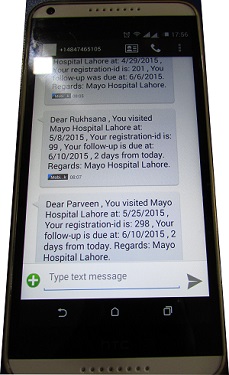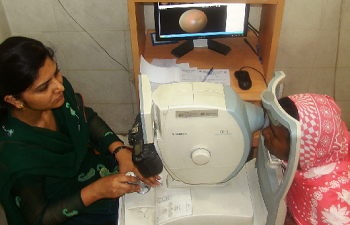Join a powerful, unprecedented alliance for better eye health for all.
Join IAPB-
Choose an alternate language here
Good quality monitoring and evaluation is of vital importance in project cycle management. The quality of a project cannot be ensured unless there is a systematic process to measure the relevance, efficiency and effectiveness of the services being provided. This process involves periodic collection and review of information on programme implementation, coverage and comparative analysis of achievements with implementation plans and key targets.

On the basis of our learnings from year one, a patient satisfaction form has been incorporated into the tracking system. This is real time data entry software that is accessible to Sightsavers’ monitoring team on a continuous basis. The data available on the tracking system and outputs submitted by partners is reviewed and analyzed periodically by Sightsavers staff. The system can generate consolidated reports, with data broken down by gender, and we can highlight progress against project key performance indicators such as Diabetes Mellitus (DM) patients screened for Diabetic Retinopathy (DR), laser applied and VR surgeries done.
Based on the data analysis, action plans are regularly modified with partners to bring the project on track and quickly respond to new realities. Key learnings and best practices are recorded in the form of case studies, which are shared with all implementing teams during the progress review meetings. As a result, Sightsavers has been able to achieve an average of 90% of the project targets in the first year.

The knowledge gained and evidence generated by the qualitative research, project findings and best practice examples will be shared with relevant national and international forums for wider dissemination. The forum of the National Diabetic Task force will be used for the national dissemination while for the regional and international levels, case studies and project learning will be shared in the form of publications.
Furthermore, Sightsavers will engage in advocacy initiatives to raise awareness of the project with the government of Pakistan based upon the progress reports generated from the tracking system. This will include advocacy with the National Eye Health Committee and the Diabetic Association of Pakistan to ensure adequate attention is given to Diabetic Retinopathy backed up by the data of DM patients screened for DR, their treatment and follow up outputs. A significant part of our work is about advocacy, and this may range from influencing communities to engaging policy- and decision makers. Furthermore, a programme intervention in our experience is always multi directional. It involves interacting with systems and structures on the one hand, while establishing demonstration projects like the project of “Strengthening Pakistan’s Response to DR” to influence policy on the other hand.

Programme Officer
Sightsavers
[email protected]